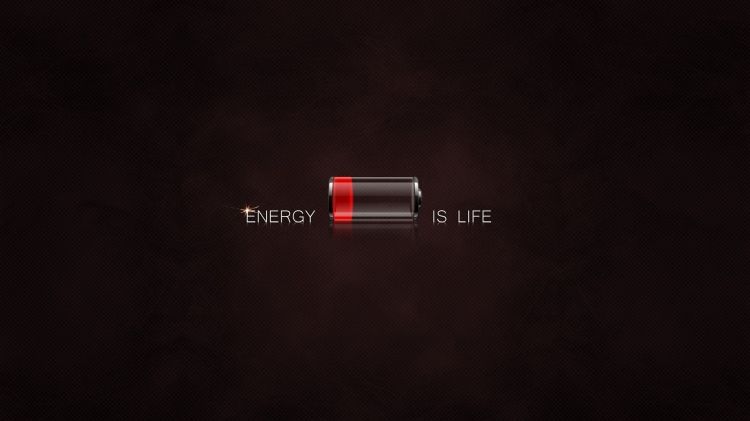Are Lithium Batteries Worth The Cost?
Jun 06, 2019 Pageview:1291
Change of mobile? Did you change your battery? Many users prolong the life of their smartphone as much as possible, which means inevitable wear of some of its components. The lithium batteries were created to have a longer duration, be lighter, and end the significant memory effect.
However, nothing prevents them from wearing out, and although it sounds quite pessimistic, your battery is wearing down since you first charge it. Today, we tell you when it is worth changing it, when not, as well as some tricks so that the aging process does not affect you in such a negative way.
Subtitle 1: Compared The Advantges Of Lithium Batteries And Traditional Batteries:
What Do lithium-ion batteries Provide Compared To Traditional Ones?
Lithium-ion phosphate iron batteries (LiFePO4) are the safest batteries among Lithium-Ion batteries. And therefore they are the batteries that more possibilities offer in the field of the renewable energies. Its main advantages over traditional lead-acid batteries are:
Greater Voltage:
Lithium is the most electronegative chemical element there is, offering the most significant capacity for oxidation. Lithium has 3.16 volts in contrast to the 2 volts of lead. Thus, a LiFePO4 battery has a nominal voltage of 12.8 volts after the series connection of 4 cells. Or 25.6 volts after the union of 8 cells. In contrast, lead acid batteries have nominal voltages of 12 or 24 volts.
Higher Speed In Loading And Unloading:
By having a higher voltage in the cell, they require less current to introduce the same energy. While a lead-acid battery may require between 8 and 12 hours, lithium batteries require a maximum of 4 hours.
Without Optimal Load:
Lead batteries are well placed in the upper load range. With a 20% download is when they have more life. In contrast, lithium batteries work entirely with non-full charges. In fact, it is even preferable not to reach 100% load. They can be approximately totally discharged without much damage (as opposed to lead-acid batteries that only support discharges of up to 50%).
Longer Life:
Four thousand cycles with 80% depth of discharge. An open lead acid monobloc battery has 500 cycles. A monobloc deep cycle battery has about 2000 cycles. And a stationary lead acid battery has 4000 cycles although with 50% maximum discharge. These advantages make lithium-ion batteries an excellent solution for photovoltaic installations. With Li-Ion batteries, decentralized energy self-consumption is easier. Having said all this, you should be the one who interprets the signals your phone gives you to warn you that the battery is not in good condition. There are some tricks to know when to change batteries, and even if you knew some of them, it's never wrong to remember them.
· The battery does not drop gradually - jumps in the percentage when going down.
· The battery does not charge gradually
· The battery takes much less time to charge than before - less capacity, less mah, less charging time -
· The battery is swollen or deformed
· The battery lasts much less than before -thanks, Captain Obvious.
When a battery begins to last significantly less, it is because the most advanced degradation process has already started, and it is probably over 80% of its capacity. Now, is it worth changing your phone's battery always?
Subtitle 2: Formation Of lithium battery Prices:
Lithium Batteries
The "science" tells us that lithium batteries hold between 300 and 500 cycles, if we calculate on average one complete cycle per day, we obtain the classic year and a half or two years of duration. However, this figure is not exact, just a mere approximation, since it does not take into account that the charging habits of each consumer are different. Many factors can cause the battery to wear out more than it should in a cycle, and any type of study can not control this. In addition, in Android, we have no way to account for full load cycles, so it does not make much sense to give them more importance than they have.
· The place where the mobile is charged and how it affects the battery temperature.
· That the mobile is loaded with a case and with what type of case.
· That the mobile phone is charged in use - low, medium, intense.
· Only charge the phone when the battery is spent.
· The mobile is charged excessively frequently without cycles from 0 to 100.
· Type of load used by the manufacturer.
· Type of load that our charger provides.
As you can see, there are a few factors that will make the cycle have "one quality" or another, so we cannot tell you precisely that after X cycles or days, you should change the battery. Needless to say, although many do not take it into account, that likes all electronic components, there are batteries with higher quality than others.
Subtitle 3: The Forecast And Market Trend Of Lithium Batteries:
Is It Worth Changing The Battery Always?
In general, it will always be worth more to change the battery of your mobile phone than to buy a new one, although it is something that you should consider. If your device is low-end, you can surely find the battery for about 10 Euros and change it yourself, although in the case of a high-end mobile unibody, although the process is similar, you may not be willing to disassemble the phone and some components, and that the price is too high taking into account the age of the device.
As we said, unless the phone does not work properly -according to your needs-, it is always advisable to change the battery, although you should know that it does not have to last as before. Not only your battery wears, but all the other components of your phone. Some of them may have an influence on the cost of the battery, so do not think that whenever you change the battery, you will have the duration of the first day.
However, a new battery will always last longer than an old one, so if you do not want to change your phone under any circumstances, fix it yourself or take it to a specialist.
- Prev Article: Lithium iron phosphate battery review
- Next Article: Introduction of the Electric Scooter Lithium Battery
Leave Message
Hottest Categories
-
Hottest Industry News
-
Latest Industry News













